Opaline has always been favored for the pattern on its wings and its sable head. The beginning of the appearance of opaline green is substantial and cantic with an edge pattern on its wings.
But over time, the breeders wanted to see it in another series, so they started a pair with a blue mutation and proceeded to another mutation.
Until now, it is complete once this Combination of opaline lovebirds mutations. Even breeders who perform transmutation have also made great efforts to enhance their opaline personatus, opaline nigrigenis, and perhaps opaline already exists in lillianae nyasa species.
Let me know in the comments field if it already exists.
But in this article, I will discuss opaline fischeri only. Where breeders race towards the sable head opaline, it is not uncommon for them to be wrong in selecting a partner.
Which precisely removes the hallmarks of an opaline. The loss of the edge pattern on the wings, the appearance of the violet color on the rump,
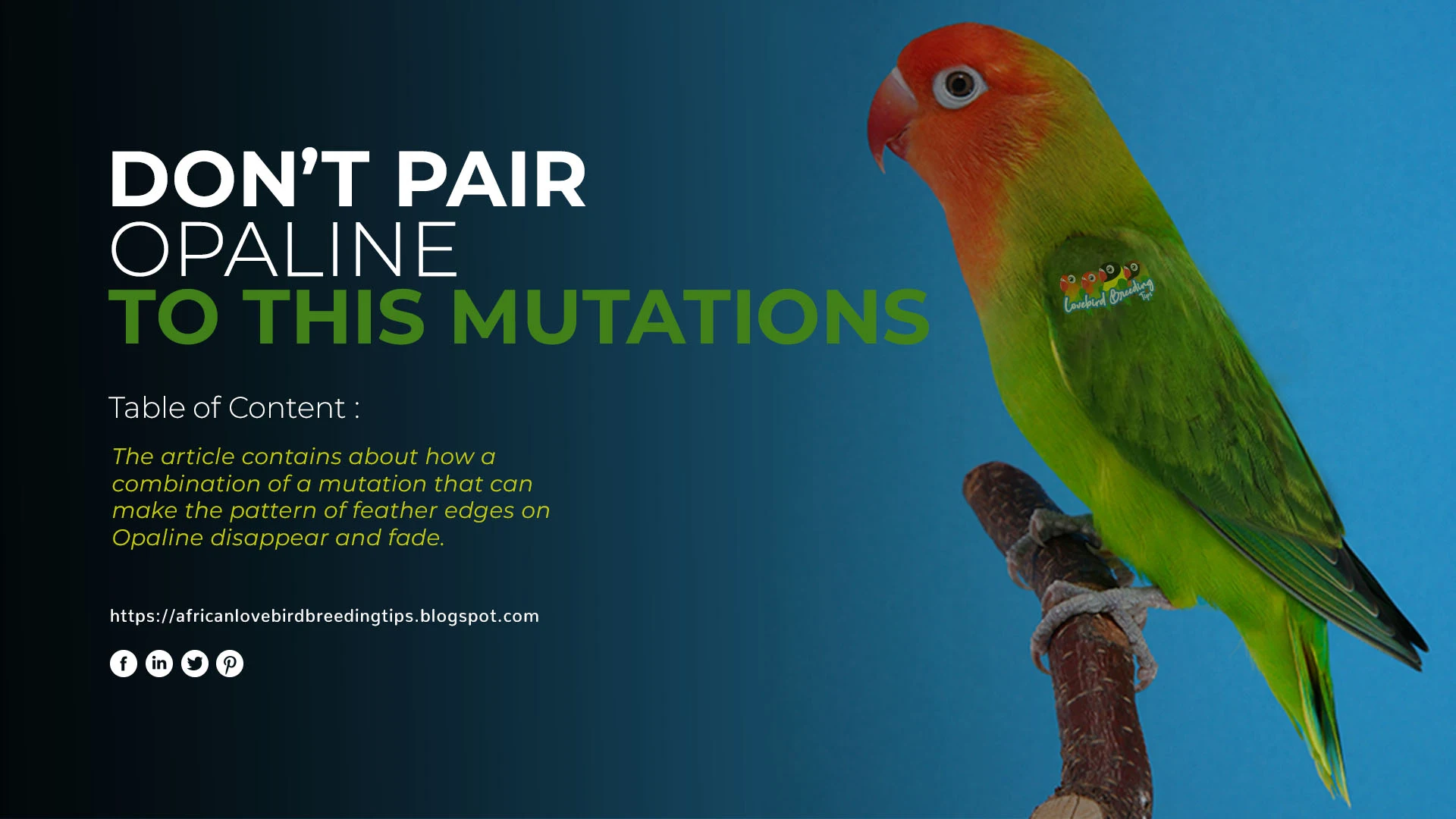
to the most crushed point where it is no longer rebiased to be recognized, whether opaline or normal.
It is undoubtedly awful for long-term survival. Here, I will tell you what mutations should not be paired with opaline.
Which precisely removes the hallmarks of an opaline.
The loss of the edge pattern on the wings and the appearance of the violet color on the rump,
to the most crushed point where it is no longer rebiased to be recognized whether opaline or normal.
It is undoubtedly awful for long-term survival.
Here, I will tell you what mutations should not be paired with opaline.
A combination of opaline lovebirds is not recommended
Combination of opaline lovebirds x Pastel Mutations
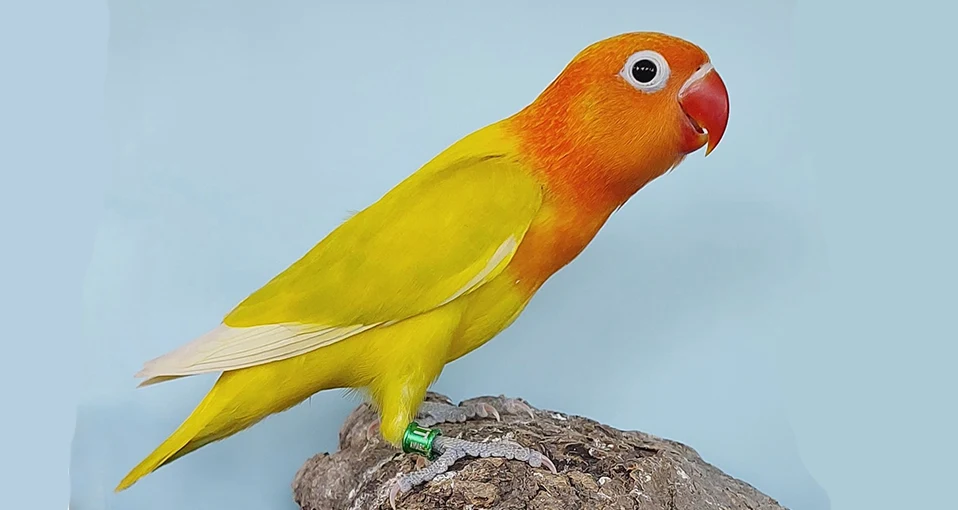


As we already know, pastel mutations are characters that reduce melanin in feathers.
When you pair opaline
with pastel, it will undoubtedly worsen the look.
All you can do is opaline with a light color and a
pattern on the wings that begins to disappear due to melanin reduction.
And the scariest thing is that
these pastel alleles will always be brought on the subsequent offspring.
Unless you want to create a
pastel lineage on the opaline.
Combination opaline lovebirds x Dominant Pied Mutation
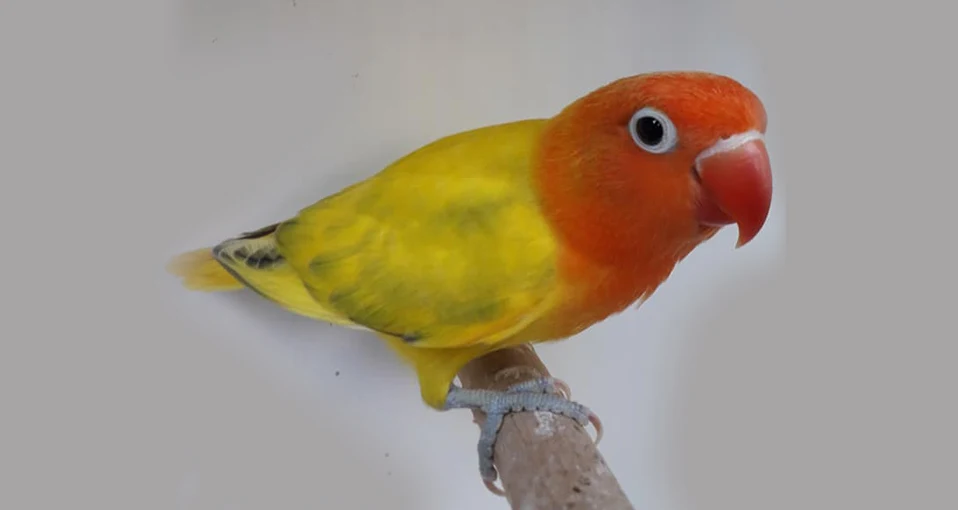
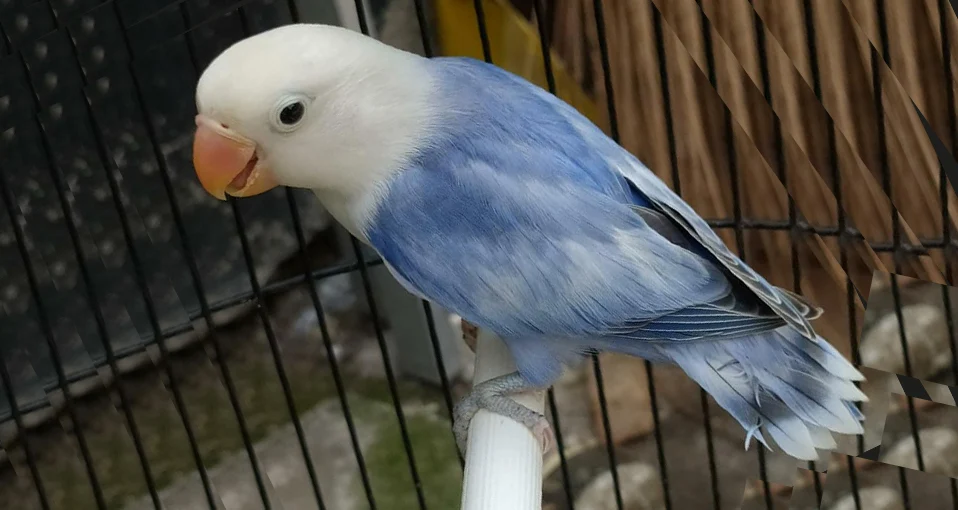

In recent years, a combination of pied x opaline has occurred based on the desire of breeders to get opaline with a
clean head without being littered with melanin.
But Pied is a mutation of Leucism, where pigment changes
result in a lack of dark color, both full and partial.
This will not be in line with the opaline mutation,
where the mutation is the spread and distribution of pigment.
In this distribution display, melanin works
darkening in the middle of the fur, and yellow psittacine plays a role in increasing the brightness of the edges of
the feathers,
thus forming an opaline pattern. When you pair it with pied, it's going to be wrong.
Leucism will play a role in brightening the middle part of the opaline feathers to appear bright yellow, and worse
when this Leucism is already acting entirely to the brim.
On the one hand, you get an opaline with a clear
head and an opaline with a thin wing pattern, even missing in some instances.
Combination opaline lovebirds x Dominant Edge mutation

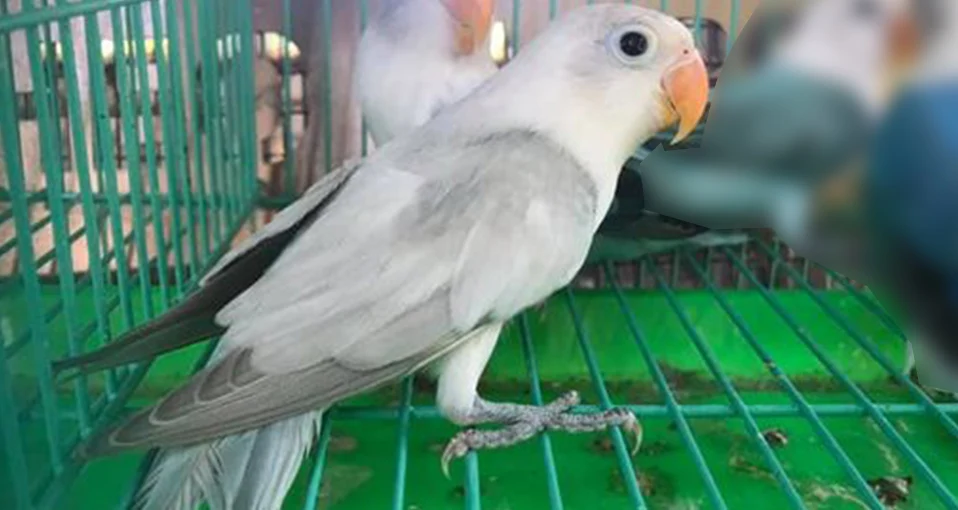
Like pastel, dominant edge mutation also occurs in 40-50% melanin reduction. It is common when this mutation occurs
in non-opaline,
but it is a little bad when you pair opaline x dominant edges.
The case is almost the same as the dominant Combination opaline lovebirds x pied, where the pattern on the wings is lost,
the middle part of the plumage becomes so bright,
and the effect shown will be very different from
the dominant edge on non-opaline.
Combination opaline lovebirds x Blue Ino ( Albino) and Creamino (turquoise ino)

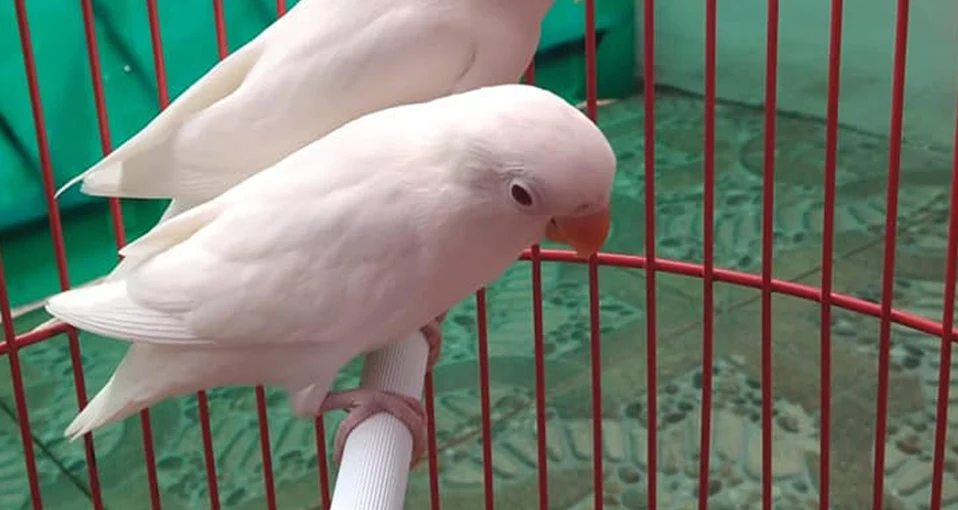
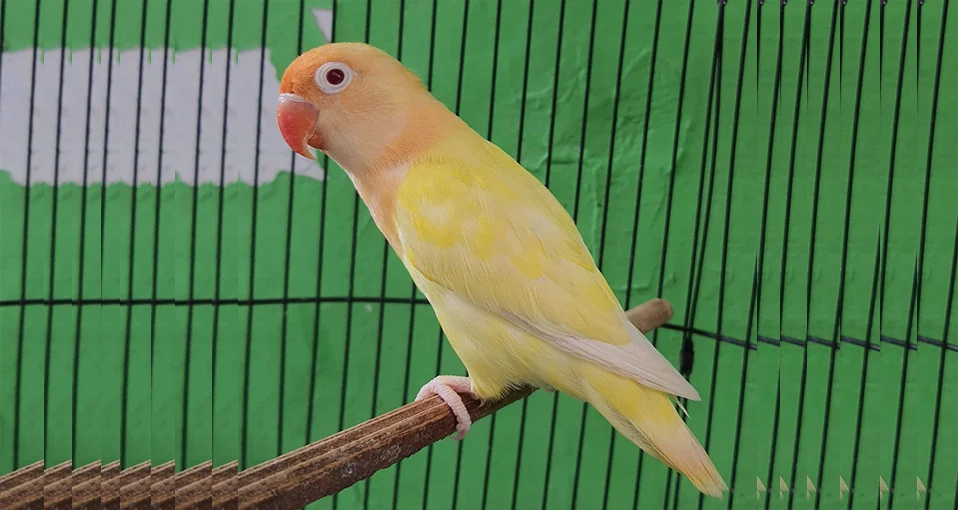
You may already understand that Ino is a mutation that reduces melanin or eliminates Melani in lovebirds, so it
appears in birds with yellow color for the series green, white for the series blue, and cream for the turquoise
series.
In this case, you can only pair opaline x
lutino. You will get a bird with yellow on the body and an entire orange on the head. So far, SLino/Lutino opaline
is the prettiest bird on the go mutation. This differs significantly from pairing opaline x ino blue (albino).
You will get a bird that looks difficult to distinguish, whether ino blue or opaline ino blue. Like the opaline x creamino pairing, this Combination seems birdy with a cream-colored body and a faded orange head, which is terrible.
Thus, the article now gives you a reference to start the Combination for your opaline.
